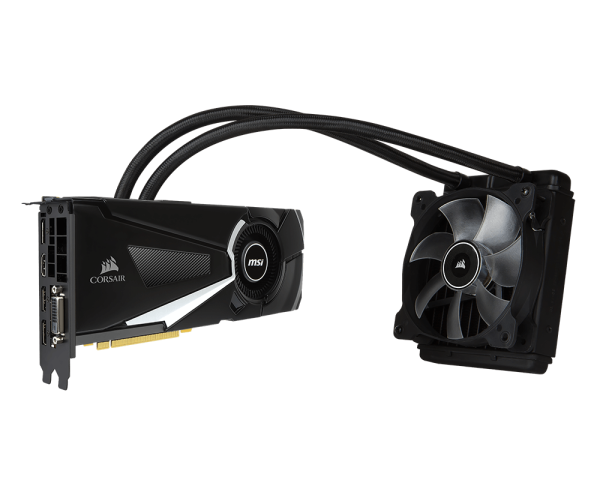There was once a time where all a graphics card had for cooling was a heatsink similar to what you might see on your VRMs. No fans needed, just a heat spreader.
However, as video card technology evolved, so did the need for cooling. Today, video cards draw usually around 50 or more extra watts when compared to your CPU (depending on the model of both) and generate up to three times the heat at stock speeds. Since the need for cooling greatly increased, there have been multiple different types of cooling styles invented.
Axial Fans
These video cards are generally the most preferred, as they form the cheaper end of aftermarket cooled video cards and actually genuinely work better. The best known out of these is MSI's GAMING X series of video cards. These dual fan video cards are some of the quietest around, even quieter than the liquid cooled SeaHawk X series from the same company. Their fans don't even switch on to 60 C, and when they are on, they're not particularly audible.
There are plenty of other makers of open-fan based cards too. Gigabyte Windforce, Asus STRIX, EVGA ACX are some of the better known ones.
How these cards work is by dispersing graphics card heat into the case ; since it is near the back, it is easy to position an intake fan to blow cool air across and blow the hot air out the back with it. By far this makes these kinds of cards popular for the relatively low noise level, caused by large efficient fans able to push more hot air out without racking up their RPM's.
Reference Coolers
These designs will usually be found on a video card bought directly from AMD or NVIDIA, and some partners of AMD carry these fans on the AMD cards still. NVIDIA's "Founder's Edition" video cards are simply cards sourced directly from NVIDIA ; though the card's looks certainly look nice with a matching motherboard + component combination in the side window.
Other than the good looks of a founder's edition design, I personally dislike the reference blower fan design, unless my case has little capability to exhaust the air that an open-fan card would blow out. These blower fans blow air two ways, across and out the back of the case (where you see the monitor ports) and also directly downward and away from the GPU. The issue is these cards have a relatively small fan and will need more fan RPMs to keep up with the heat produced, plus there is only one fan. That said, the RX 480 for instance caps out at a modest 40 Db, which is still really quiet. Generally for the extra price with a founder's edition card, I would rather stick with an open fan design like the MSI Gaming X for it's silence and effectiveness.
Hybrids
The last category isn't as widely talked about but it exists and is still an option. A hybrid video card consists of the reference blower fan but also a water block inside the card to bring direct cooling to the parts.

Does the cooling affect performance? Most say ; not really. The only majorly known cards to thermal throttle are cards like the Founder's Edition under heavy load with a lack of extra case cooling, or a bad thermal setup in general.
Does the cooling affect overclocking? Most who overclock their cards routinely say ; not really. Again. There has been a pre-conceived notion that water cooling is immediately better than air cooling but it simply isn't. It's just a different method of direct exhaust / intake on a card versus air and a good air setup will often equal a decent or well done water setup ; it comes down to preference / aesthetic. There have been many success stories of eclipsing 2 GHz on both hybrids and open fan cards and running smoothly.
Does the cooling affect noise? No, actually. MSI Sea Hawk cards have been reported to be 4 DB louder under load and 1 DB louder idle, which doesn't seem to be quieter to me ; the difference isn't terribly large however.
So what can we make of this?
If buying a video card comes down to the design, open-fan designs trump all. They do it all better or the same as a reference or hybrid card and often can be had for less money ; as much as $100+ less than a reference version of the same NVIDIA card, and over 50 less than a sea hawk versus a gaming X for instance.
No comments:
Post a Comment